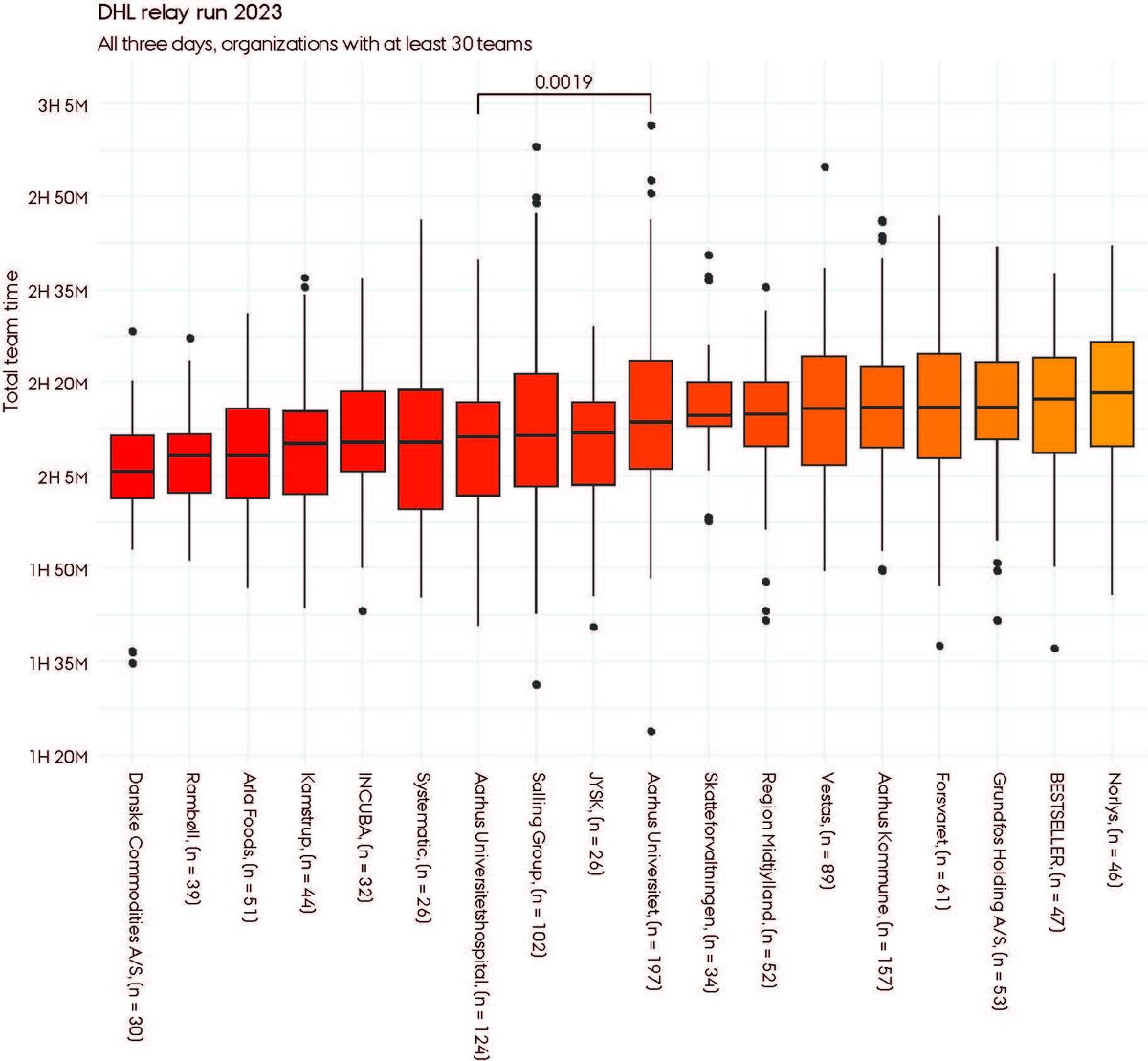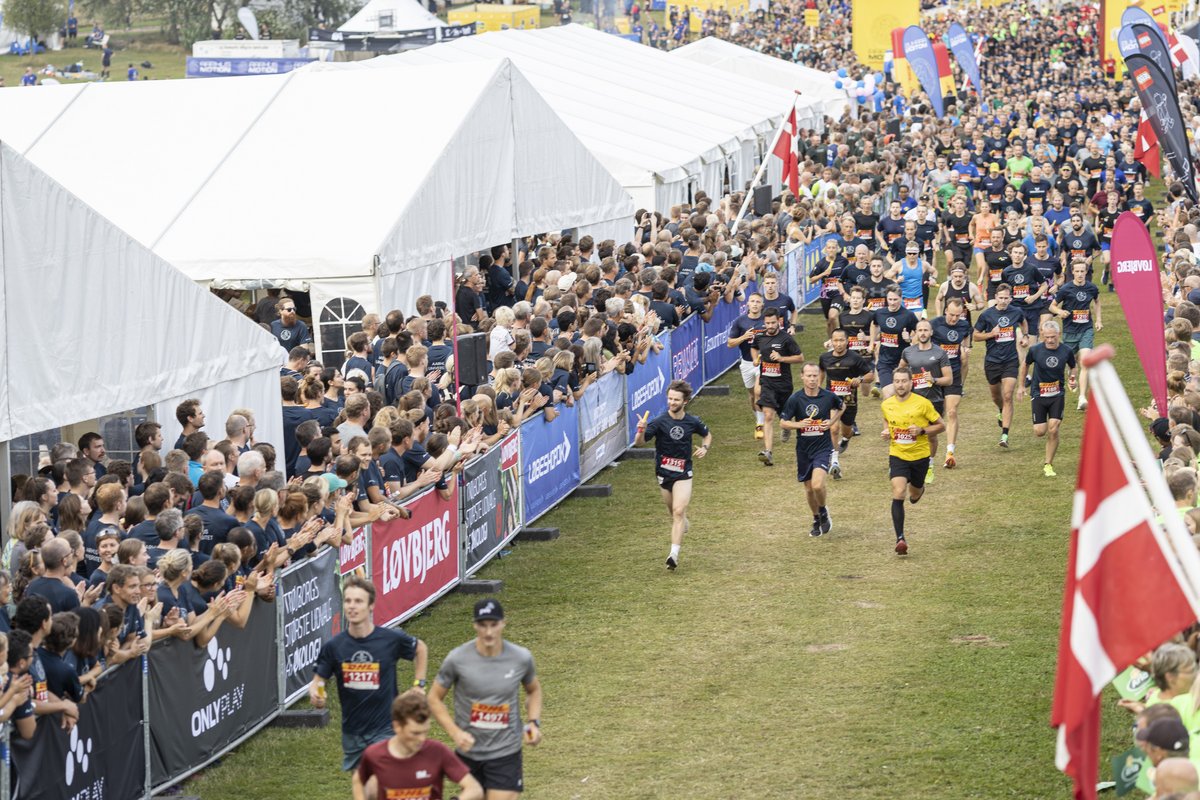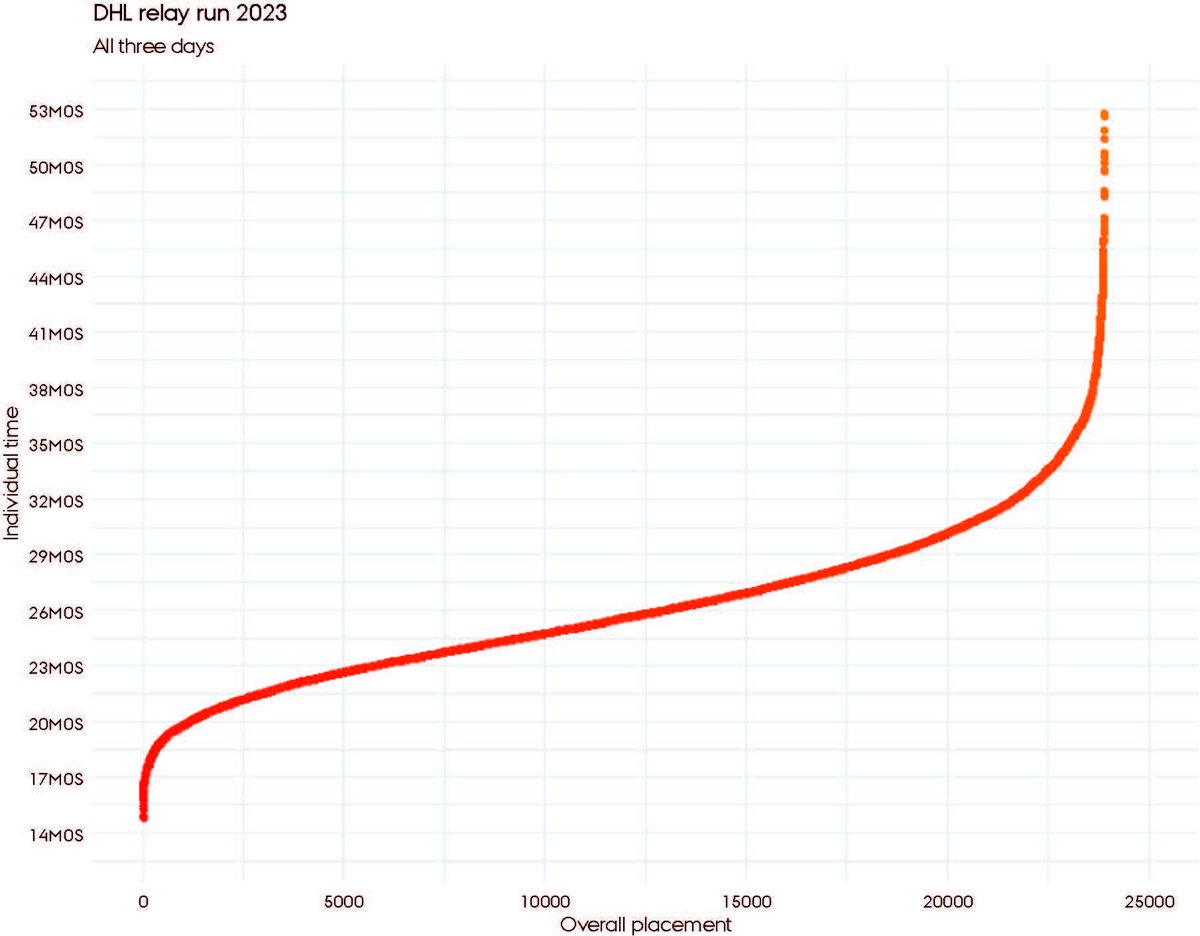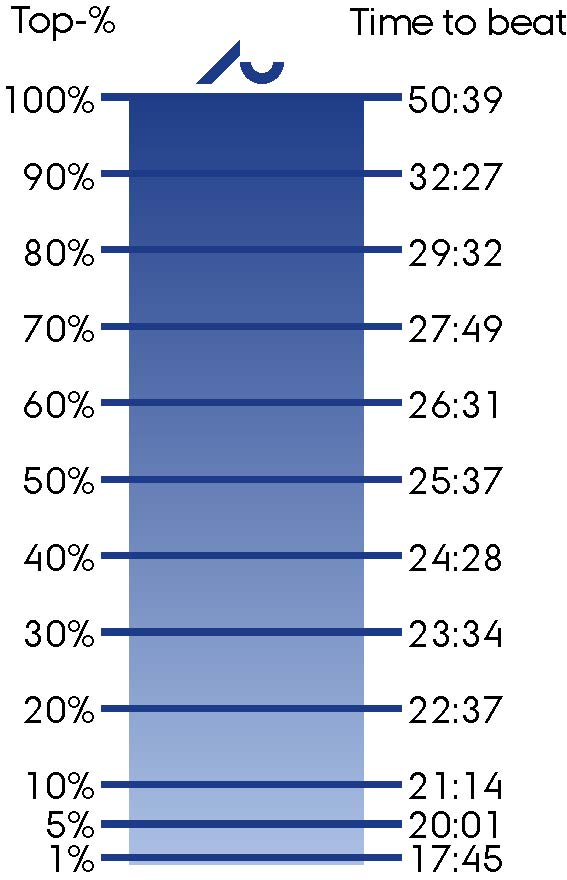Point of view: When a data scientist runs the DHL Relay Run ...
Associate professor Jacob Hesselvig Fredsøe did not only run the DHL Relay Run. Because he's a data scientist, he couldn't resist downloading the times of all participants to find out how Aarhus University performed overall - and even more importantly, how fast you needed to be to get bragging rights over your fellow AU athletes.
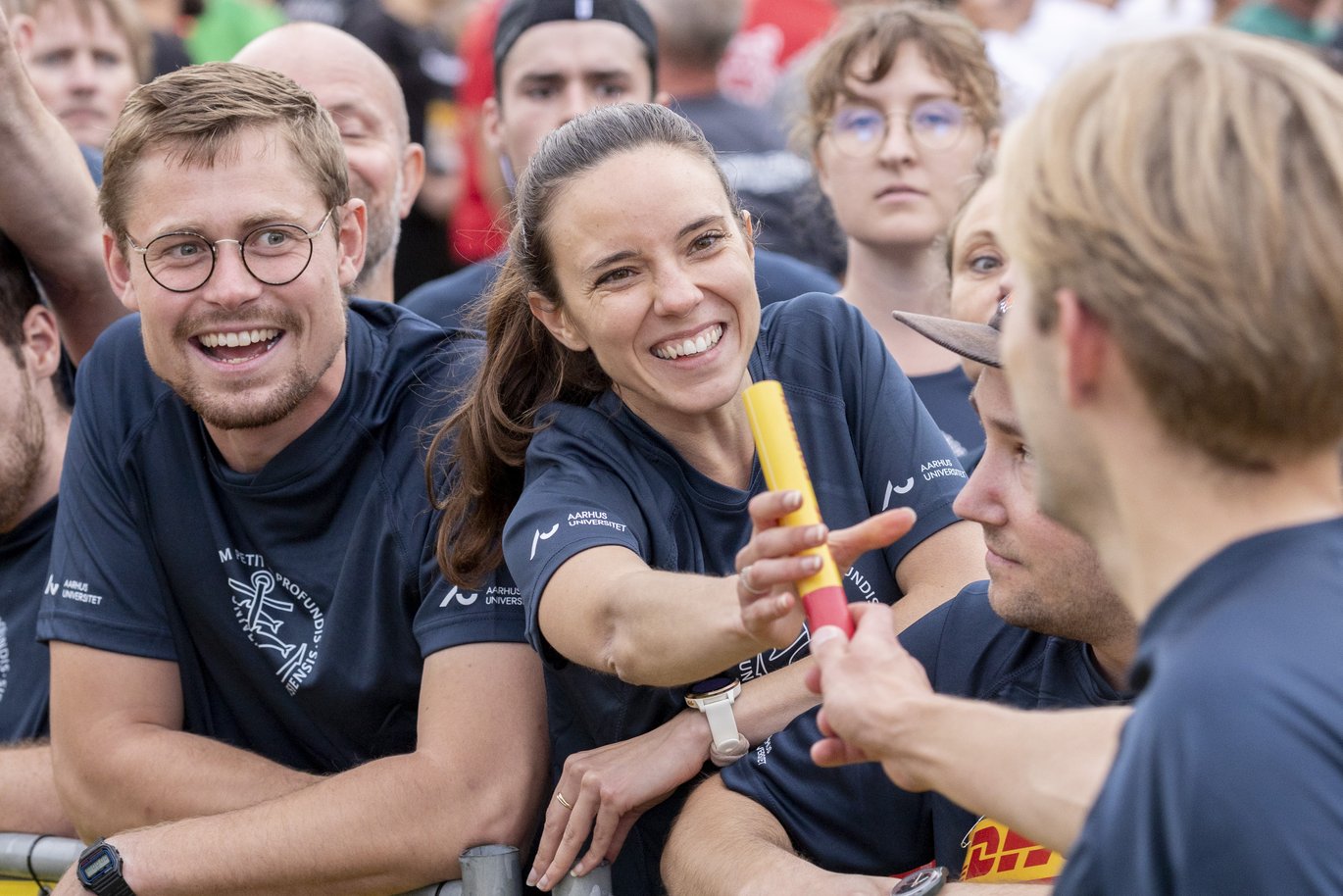
ABOUT THE DHL RELAY RUN
Each year, since 1983 (with the exception of 2020 – the year that did not exist), runners have congregated at Mindeparken for the DHL Relay Run.
Over three consecutive days, more than 4,000 teams of five runners each participate, taking turns to complete 5 km stretches. The team that finishes the cumulative 5x5 km first emerges victorious.
For those less inclined to run, there's the alternative of walking 5 km with four colleagues.
This year, I was one of the 43,108 participants in this year’s DHL relay run, which puts the total traveled distance around halfway to the moon. I know the number of participants with quite high precision, as I went and downloaded the time for all of them. I should perhaps mention that I am normally employed as an associate professor at Aarhus University, at the Department of Clinical Medicine, and am used to wrangling dataset as part of my job.
AU on the run
Among the nearly 1,200 organizations partaking across the three days, Aarhus University featured prominently with 197 running teams and 129 walking teams successfully completing the course. While the event is primarily for enjoyment, it retains a competitive aspect. Here, the most obvious questions to ask would be “is Aarhus University faster than other organizations?”.
Remarkably, when organizations are ranked by median time (the middle value in an ordered dataset, not to be confused with the average), Aarhus University, it turns out was swifter than the Danish Defense (Forsvaret). This was quite surprising to me, given the expected fitness levels of the Defense personnel. At the other end of the scale, Danske Commodities secured the top position this year - they must have some power in them. It also turns out that if you stick the word “hospital” on the end of Aarhus University, you become significantly faster.
Individual times
The fastest runner this year (after removing outliers like Kaj from Bygma, who ran at a speed of 1800 km/hour), was Andreas Bock Bjørnsen from AU Elitesport, with an impressive time of 14 minutes and 48 seconds out of almost 24,000 runners.
Completing the 5km run in under 20 minutes would have secured a spot within the top 1181 participants. However, to break into the top 100 runners, you needed to complete the 5km in less than 17 minutes and 30 seconds. The median completion time for all runners stands at 25 minutes and 36 seconds. If you manage to finish faster than this, you land in the top 50% bracket.
Bragging rights
But what if you only want bragging rights over your peers from Aarhus University? Here, you would be in the top 5% if you could run the 5km in under 20 minutes, while a time below 29 minutes and 32 seconds would put you in the top 80%.
So, if you start training now, you know what to aim for in DHL 2024.


